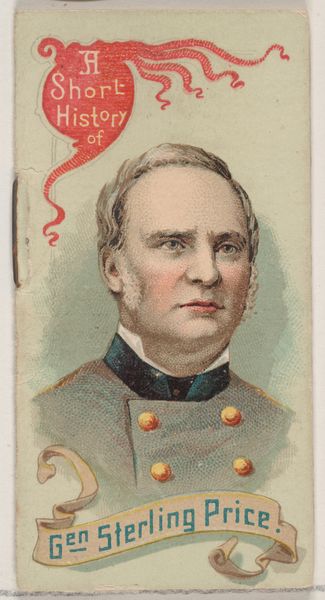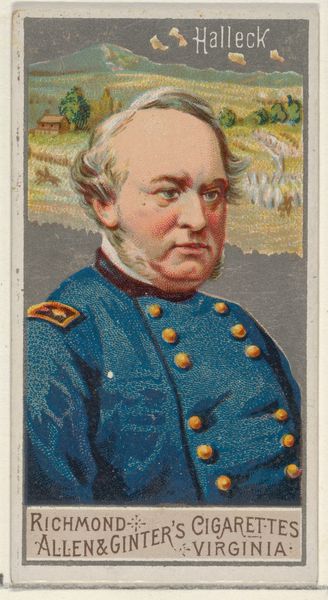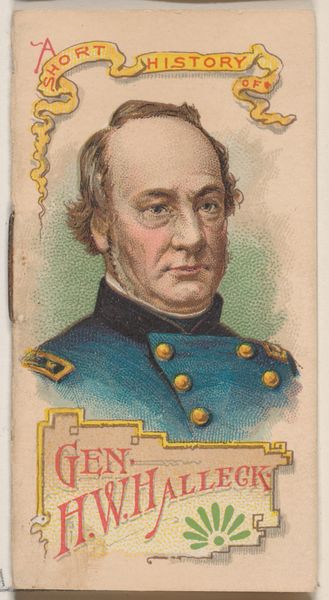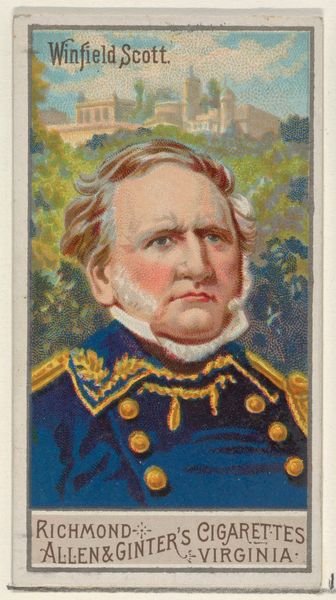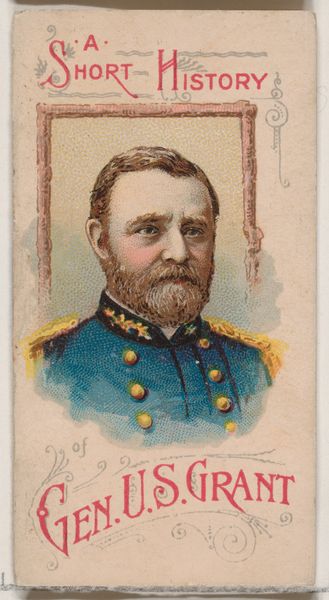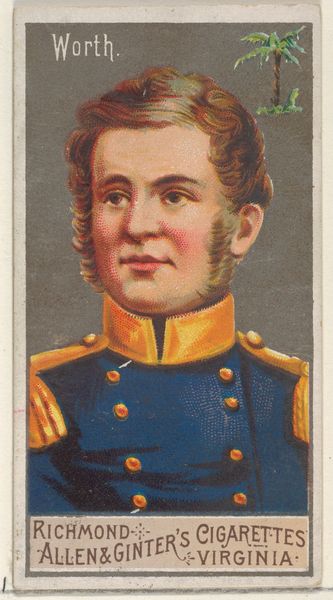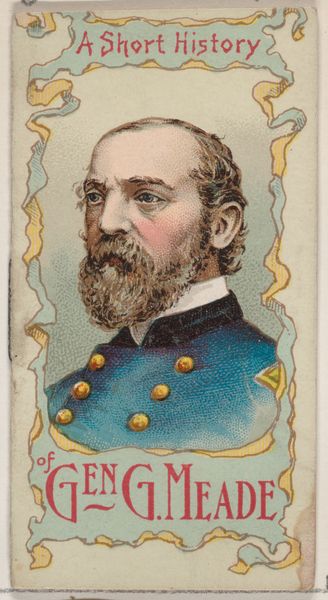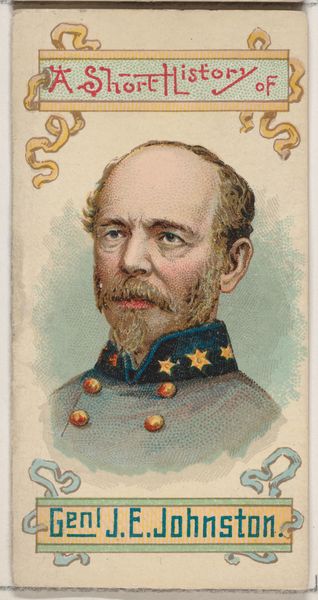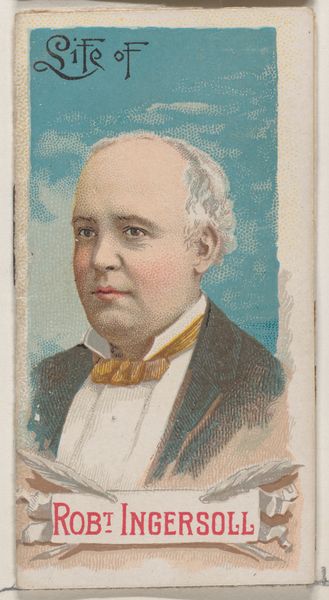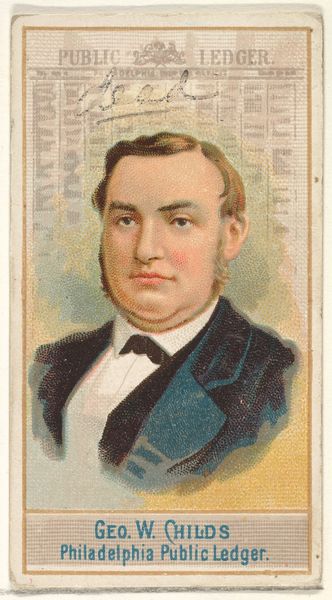
A Short History of Admiral David Glasgow Farragut, from the Histories of Generals series of booklets (N78) for Duke brand cigarettes 1888
0:00
0:00
drawing, coloured-pencil, print, watercolor
#
portrait
#
drawing
#
coloured-pencil
# print
#
caricature
#
caricature
#
watercolor
#
coloured pencil
#
watercolour illustration
#
history-painting
#
academic-art
Dimensions: Overall (Booklet closed): 2 3/4 × 1 1/2 in. (7 × 3.8 cm) Overall (Booklet open): 2 3/4 × 2 7/8 in. (7 × 7.3 cm)
Copyright: Public Domain
Editor: This is "A Short History of Admiral David Glasgow Farragut," a booklet insert from 1888 for Duke brand cigarettes. It seems to be a watercolor and coloured pencil drawing, reproduced as a print. It’s interesting that such detail went into what was essentially advertising. What are your thoughts on this piece? Curator: I am interested in how objects like these blur the lines between art and commercial product. These weren't necessarily 'art' in the high-art sense, but were mass-produced items meant for consumption. Think about the labour involved - the artists creating the image, the factory workers printing them, and the agricultural laborers growing the tobacco. Each tiny print embodies a complex system of production. Editor: That makes me see it in a completely different light. So, it's not just about the image of the Admiral, but about the entire production process? Curator: Precisely. Consider the function: this was a collectible included with cigarettes, intended to promote the brand, educate, and perhaps entertain. Its value isn't necessarily aesthetic, but tied to its place within this specific culture of smoking, collecting, and marketing. How does this influence your understanding of art in this period? Editor: It makes me question the boundaries we impose. Was something made for commercial purposes considered 'less than' something in a gallery, even if it shows skill and contributes to the cultural landscape? Curator: Exactly! By examining the materials and the context, we challenge traditional notions of art. This small print shows that what gets designated 'art' is shaped by economic forces and social practices. The everyday material world carries enormous cultural weight, so do we need to redefine artistry within these realities? Editor: I never thought about art this way before; examining production feels like an important, maybe even more accessible, way to understand the impact of a work. Curator: Indeed, a materialist lens allows us to consider how art is shaped by - and also shapes - our daily existence.
Comments
No comments
Be the first to comment and join the conversation on the ultimate creative platform.
